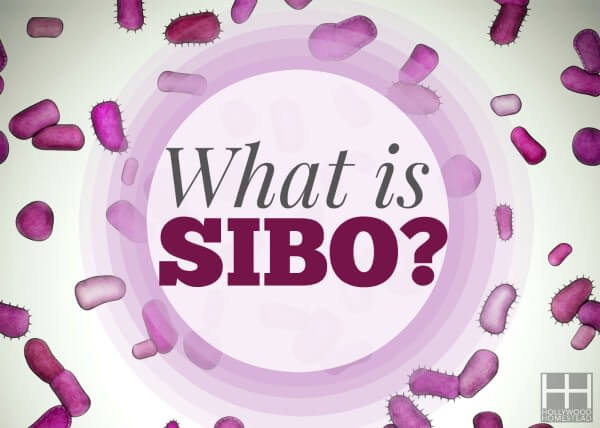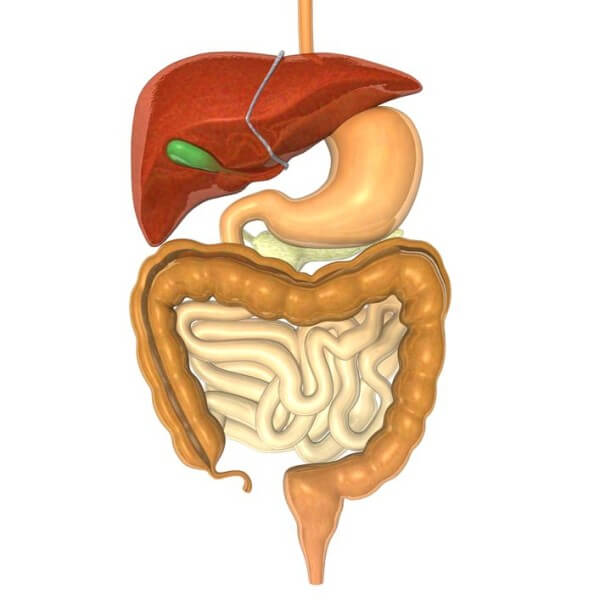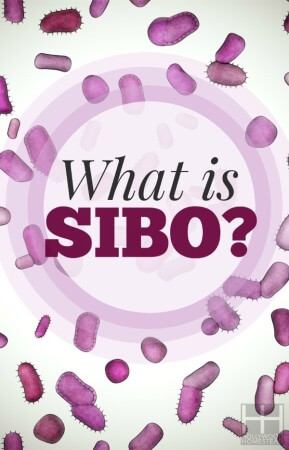
Not that long ago, the word “bacteria” brought up all sorts of negative connotations and we’d do anything to keep it out of our bodies. Then we started to realize how important some types of bacteria are for our bodies. Hence, the boom of probiotic supplements and trendy yogurts. But it isn’t adequate to label bacteria simply as “good” or “bad.” A type of bacteria might be “good” in one part of your body, but “bad” in another. Likewise, too much “good” bacteria can be a very bad thing. This is what happens with SIBO — Small Intestine Bacterial Overgrowth syndrome.
What is SIBO?
SIBO is a bacterial infection of the small intestine. Now, bacteria is normal in the digestive tract. But, with SIBO, it isn’t the presence of bacteria which is the problem. The problem is that there is too much bacteria and/or the wrong type of bacteria. By the “wrong type of bacteria,” it doesn’t necessarily mean some weird strain of bacteria is wreaking havoc on your gut. Most often, SIBO occurs because bacteria which should be in your large intestine gets into your small intestine.1
SIBO is not contagious so you don’t have to worry about it spreading to anyone else.
Good news! There are now SIBO breath tests that you can order directly without a doctor’s order! While I’m a HUGE fan of having a doctor’s guidance, I understand the need to know whether you have SIBO or not before you invest in a practitioner.
You can order the test directly and it will be sent to your home with instructions on how to take it and how to send it back and get your results!
Understanding the Digestive System
Before we can talk about what is SIBO and why you should be worried about it, we need to go over how the digestive system works. When you eat, food passes through your body through a series of tubes. At each stage, there are various acids which break down food so your body can absorb nutrients.
- Mouth: chewing and saliva start breaking down starches
- Esophagus: Swallowing brings food to the stomach
- Stomach: Muscle movements mix food with stomach acid. Proteins are broken down.
- Small Intestine: Food mixes with stomach acids, bile from the liver, and pancreatic juices. Food is broken down and absorbed through the walls of the small intestine.
- Large Intestine: The large intestine takes waste from the small intestine. It absorbs any remaining nutrients. It also absorbs liquid so the waste turns into stool. The stool is then pushed out of the body during a bowel movement.

The small intestine is really quite fascinating. It is about 3.5 times your body height – or about 20 feet long!2 Aside from the first few inches of the small intestine which are smooth, the small intestine is made up of many folds called mucosal folds. It is also lined with finger-like projections called villi. The folds and villi increase the surface area of the small intestine so it can better absorb nutrients. The folds also help your small intestine mix food with acids so they can be broken down.
The small intestine is arguably the most important part of the digestive process. It is in the small intestines that food is broken down into absorbable parts. The small intestines are responsible for getting these nutrients into our bloodstream so we can use them.3,4,
The Role of Gut Bacteria
Before you get scared off by the idea of bacteria in your digestive tract and take steps to eliminate all of it, you need to be aware that we need bacteria. There are about 100 trillion bacteria in our intestines alone! This is about 10 times the number of cells our bodies have.
Bacteria in the gut has numerous functions, including:
- Breaking down carbohydrates so they can be absorbed
- Helping the gut’s immune system develop
- Protecting against disease-causing bacteria
- Stimulating the growth of the intestinal lining
- Producing vitamin K
Bacteria is so important for our health that it is now often referred to as “the forgotten organ.” 5,6
The vast majority of bacteria in our guts is located in the large intestine. To put this in perspective, there are about 10-100 billion bacteria organisms present per teaspoon of fluid in the large intestine, compared to just around 100 thousand organisms in the small intestine.7

*Image from Chapter 95 of Microbiology of the Gastrointestinal Tract
The location and concentration of bacteria throughout the intestines is really important for health. So, with SIBO, the problem is NOT that you have bacteria in your small intestine. The problem isn’t even one type of bacteria. The problem is that you have:
- Too much bacteria and/or
- The wrong types of bacteria
Most commonly, SIBO is caused when bacteria which should be in the large intestine (and would be harmless there) gets into the small intestine. Though not as common, SIBO can also be caused by an overgrowth of the normal bacteria of the small intestine.8
This is why SIBO is so hard to treat. If it were just a problem of one type of bacteria, or too much bacteria, then we could take antibiotics and kill off the “bad” bacteria. But SIBO involves multiple types of bacteria, including normal “healthy” bacteria which should be present – just that it is present in the wrong part of the body and in too high of concentrations. While antibiotics are a great life-saving innovation, they are commonly overprescribed. Because antibiotics also kill off the healthy bacteria which should be in your gut, taking antibiotics can ironically be a cause of SIBO!
Taking antibiotics may get rid of the overgrowth temporarily, but they can upset your gut flora balance and the “bad” bacteria is just likely to proliferate again – which is why SIBO recurrence is so high.
If you do use antibiotics to treat SIBO, they MUST be combined with and followed by a strict diet for prevention. Otherwise, recurrence is almost inevitable. We will get more into this in later issues of this series when we talk about the different ways to treat (and beat) SIBO.
This is the first article in our series on Treating SIBO. Learn more about SIBO in the next part of the series:
Ready to eliminate SIBO once and for all? Get your copy of The SIBO Solution: Your Comprehensive Guide to Eliminating Small Intestinal Bacterial Overgrowth by clicking HERE. You’ll also receive a BONUS SIBO Detox Support Guide mini ebook with your purchase.

Latest posts by Sylvie McCracken (see all)
- Treating H. Pylori (Part 3): What H. Pylori Does to the Body - August 8, 2022
- Treating H. Pylori (Part 2): How H. Pylori is Contracted - August 3, 2022
- Understanding Beef Labels: Organic, Pastured, Grass-Fed & Grain-Finished - July 25, 2022
Hi Laura – I was wondering the same thing. Did you get a response to your question?
Very interesting article- i am looking forward to the next steps! i have lots of clients and friends battling this.
Thanks Teri! 🙂 Glad you found it helpful. There are 3 articles so far. More to come!
Hi. Can I ask the best probiotic. Please. As I do think of have. S ibo
How can you tell if you have SIBO or Candida? Are they the same or at all related? I definitely think I have a bacteria problem with my digestive system but am trying to figure out what the real problem is? At first, I thought it was candida based on my symptoms but after coming across your blog on SIBO (which I’d never heard of before) my symptoms seem more similar to the ones you list. Trying to get to the bottom of over 15 years of gi issues (severe bloating, constant gas, constipation/diarrhea, chronic, sever and almost constant stomach pain). Have been to a gi specialist who could not find anything “wrong” and diagnosed me with IBS (the ADD of gi problems). Any feedback would be greatly appreciated!